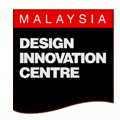v.2.0 |
|
 |
|
 |
|
:: |
|
|
 |
The arrival of Malaysia Design Innovation Centre (MDI), a first-of-its-kind regional creative hub in design and media content, is set to stimulate a new period of growth for industry and should augur well for the country. MDI, which is part of Limkokwing University College of Creative Technology in Cyberjaya, is a fully integrated business development centre that is expected to revolutionise the design landscape and help propel Malaysia ahead in terms of creativity and innovation. With the government and private sector initiative in place, more young people stand to gain enlightenment on how design is connected with wealth creation - and will better understand the potential of design in creating new realities in the economy. The professional arm of Limkokwing, MDI focuses on training and content creation. At the innovation centre, various components in the areas of research, exhibition and showcasing are made available under one roof and these provide the platform for Limkokwing students to interface with industry’s most creative professionals. Through MDI, Limkokwing is able to fuse academic excellence with industry innovation. Students get to incubate ideas into commercially viable content that companies are likely to invest in. The innovative centres where this takes place cover the areas of performance art, design, branding, communications, exhibition, enterprise, and business innovation. Strategic collaborations to boost industry Also in line with its position as regional creative hub, MDI will form partnerships with international design centres in Europe to promote brand building and innovation and to build a Malaysian presence there. Already in place are links with the world-renowned Istituo Europeo di Design (IED) in Milan, Italy, and with the Korea Institute of Design Promotion. Similar collaborations with design centres in Germany, the UK and France are in the pipeline in an effort to, as Tan Sri Lim Kok Wing puts it, “bring together the best of the east and west in design and innovation”. The president of both Limkokwing and MDI says: “These significant collaborations would boost industry and benefit our students. They would be the platform to connect with innovative thinkers and designers in Europe.” Other links complementing MDI’s efforts are with reputable overseas universities such as Swinburne University of Technology in Australia. Swinburne’s Dean of Design Prof Helmut Lueckenhausen is among the academics who believes Tan Sri Lim to be on the right track. “Tan Sri Lim has always had a strong vision in place,” Prof Lueckenhausen says. “He has always been clear about what he wants to do here - producing a new generation of graduates well equipped for the global environment. MDI is the platform to carry out work in developing research; through it, more high-level engagement with industry will be realised.” Prof Lueckenhausen is also excited with the fact that MDI is “part of a whole network of future planning on design”. “The location in Cyberjaya with its whole futuristic essence is impressive,” he says. “It’s like saying ‘we must do new things, there must be new understanding’, and what makes it more exciting is that the government is central to all these. The innovation centre will allow Malaysia to bridge with other cultures, other markets, and realise its goals as a hub.” Vital components in New Economy Calling MDI “a nucleus for all things creative”, Tan Sri Lim says major companies and organisations represented at the centre can expect to be ahead in many aspects, not least in terms of research and development. He stresses on the rationale behind the concept, saying, “Content creation and design solutions are vital components in the new economy. The global competition is such we have to design and brand our own products and services so the world would come to know about the brand we have. We must build our own reputation as a quality country capable of producing high quality goods.” Tan Sri Lim says in light of globalisation, Malaysian manufacturers simply cannot avoid looking at the bigger picture. “Our manufacturers must think about reaching the global market, starting perhaps with the 500 million people in Asean and three billion in Asia. They must look at building their products for the next 10 or 20 years by practising creative thinking in business. They must put resources into R&D.” Platform to advance business ideas MDI focuses on helping companies keep abreast of technology and at the same time stay ahead of competition. “The centre,” explains Tan Sri Lim, “is where they could hatch plans to advance their business ideas and concepts. It would provide the space and support in terms of equipment, facilities as well as support staff. Tan Sri Lim often points out how the world’s most successful countries, such as the US, Japan and Taiwan, are also the most innovative - driving home the importance of innovation in order for a country to be competitive. “There can be no innovation without creativity,” he says. “Design in every form is at the heart of every business. Designers are thinkers, they are important agents of change. Design involves knowledge and critical thinking. The whole process of design involves R&D. It means creative content - knowledge produced and packaged effectively. It’s a business process, a business tool.” Integrating creative industries in setting standards MDI integrates the various design disciplines, covering such areas as film production, music recording, architecture, TV& broadcasting, 3D animation, virtual reality and interactive multimedia. It is a haven for creative businesses such as designer boutiques and the centre is set to host various activities in support of the creative industries. Art exhibitions, car shows, concerts, fashion events and hair design shows are among the regular features. An event being held at MDI is the Best of Malaysia 2004 showcase that highlights leading Malaysian brands. Being industry leader means every effort at MDI is meant to inspire. Tan Sri Lim says, “It’s about helping the country become a leader, not a follower. The western world has been setting standards all the while and we have come to a point where we should learn to innovate, if not originate. We should be innovating instead of imitating - or we will lag behind other countries before long.” |
||
